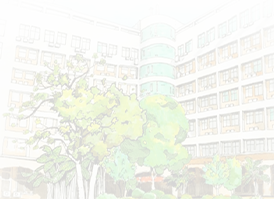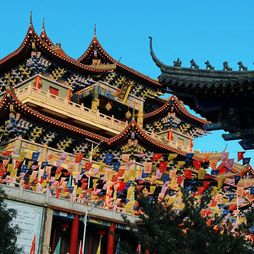Intangible cultural heritage is an important resource for rural revitalization and a treasure of traditional Chinese culture, but in modernization, many intangible cultural heritage projects face the risk of decline or disappearance. Impacted by informatization and globalization, they have dissemination and inheritance issues, and many young people have lost interest in traditional culture.
To better inherit these intangible cultural heritages, the Zhirong Yuecai practice group responded to the call of Guangdong Province's project and actively engaged in the exploration and promotion of intangible cultural heritage in Shixing County. Relying on the college's multi-disciplinary advantages, it focused on rural revitalization and cultural inheritance, combined the project, explored the rich resources, and promoted the modern transformation and inheritance through modern means and creative design.
Tell the story of traditional culture:
The practice team has visited Shangfeng Temple, Hongwei in Shixing County, and tthe produce base of Qingcao Lion. Through the face-to-face communications, the team not only felt the unique charm of intangible cultural heritage but also deeply realized the hardships and responsibilities of inheritance.
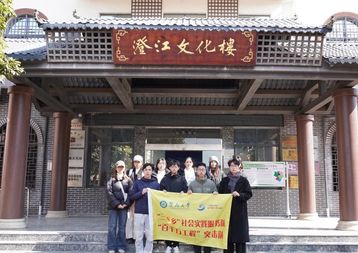
Shangfeng Temple:
Shangfeng Temple is not only an important place for traditional folk activities in Shixing, but
also a fertile ground for the growth of intangible cultural heritage. During the temple fair every
year, villagers from surrounding villages and towns gather here to participate in celebration activities
such as dragon and lion dances, sacrifices and blessings. These activities not only inherit the folk
art of Shixing, but also reflect the spirit of harmonious coexistence between local people and
nature.
In the talk with the temple's person in charge, we learned that the area of Shangfeng Temple was once a birthplace of traditional handicrafts and folk arts in Shixing. The intangible cultural heritage items like the lion dance and temple fair performances have a deep history with the temple. Though the temple now faces issues like fewer believers and a fading temple fair, it remains an important place for inheriting Shixing culture.
Through in-depth communication with the temple, we realized that the inheritance of intangible cultural heritage relies not only on skill transfer but also on the joint support of the local community and cultural environment. The team proposed that through image recording and new media promotion, more young people can know about the folk activities in Shixing, and give new vitality to these traditions through cultural and creative design.
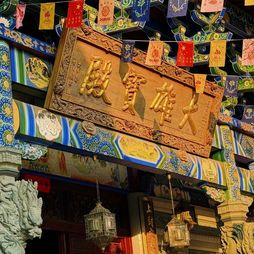
Hongwei:
Hongwei, in Shenbei Village, Shensuo Town, Shixing County, is a Hakka enclosure house built in the Daoguang period of the Qing Dynasty. Originally named Dian'an Enclosure, it's called Hongwei for its red walls. Its simple architecture showcases Hakka culture charm. It was an important revolutionary stronghold in the Anti - Japanese War. In the 1940s, the Guangdong Provincial Committee and the Northern Guangdong Provincial Committee of the Communist Party of China had offices here. Local Party organizations carried out numerous underground activities, contributing to the war in Guangdong. Hongwei has three gates and thick walls, once boasting 96 rooms on five floors, covering about 2,500 square meters. It contains profound revolutionary history and is a precious spiritual landmark.

In the practice of Hongwei culture protection and inheritance, the practice group actively explored diverse paths and shot a series of videos about overseas Chinese. Chen Kangle, an overseas Chinese from Romania, said, Through this practice, I realized the grim situation of Hongwei's protection. As a precious historical site, Hongwei's historical and cultural value must not be forgotten. We can incorporate its stories into cultural and creative products and promote them via digital platforms. This will help more people understand Hongwei's significance in local and revolutionary history, and revitalize Shixing's historical culture. Only by leveraging the videos' reach and the creativity of cultural and creative products can Hongwei culture gain wider recognition and thrive.
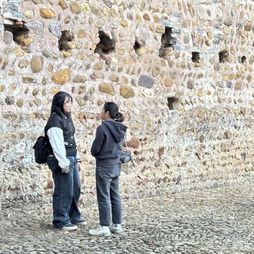
Chengjiang Green Grass Lion:
Chengjiang Green Grass Lion, also known as Lucky Lion, is a gem of traditional folk art in Shixing County. It integrates martial arts, acrobatics, and percussion music performances, boasting rich historical and cultural values. However, with the passage of time, the inheritance of the Green Grass Lion is facing huge challenges.
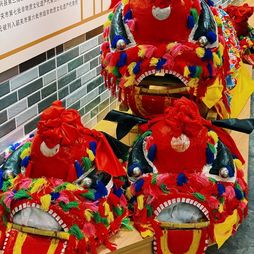
During the visit of the practice group to Chengjiang Town, they met the inheritor of this culture - Master Zhang Fuyuan. Though elderly and unable to make the Green Grass Lion himself anymore, when talking about this skill, his eyes still shone with love and reluctance. He said emotionally, If I die, it will be very difficult for the Green Grass Lion to be passed down.
Master Zhang has many disciples, but few can fully master the production and performance of the Green Grass Lion. The systematic inheritance of this skill is getting increasingly difficult. However, Master Zhang's little grandson is learning to blow the conch, which, as a tiny sign of inheritance, offers a glimmer of hope yet also makes the sense of responsibility even heavier.
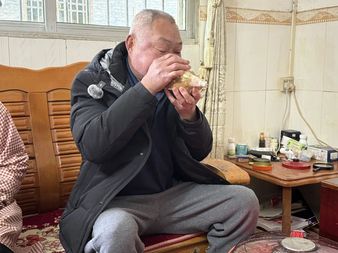
When it comes to the endangered Qingcao Lion, the person in charge, Jiang Wenrui, said: We explored its cultural connotation. We had in-depth communication with Master Zhang and shot promotional videos, recording details. Later, we'll spread them via self-media. We hope to revitalize it. We know intangible cultural heritage is the future to protect and inherit. We hope more young people in Shixing will join through visits, records and dissemination. It needs everyone's protection. In the future, we are guardians and disseminators.
Convergence and innovation:The team, through field visits and in-depth communication, comprehensively understood Shixing's intangible cultural heritage and thought about combining its promotion with modern industries. In summarizing results, the practice team plans to present the charm of Shixing's intangible cultural heritage via documentaries or short videos, design intangible-cultural- heritage themed cultural and creative products, and promote them on social media and e-commerce platforms. These measures aim to help Shixing's intangible cultural heritage reach wider areas and let more people feel the profoundness and unique charm of China's excellent traditional culture.
The Zhirong Yuecai industry-university-research integration practice group has interpreted rendezvous with Shixing through actions. They'll keep helping intangible cultural heritage regain vitality innovatively, tell Chinese stories with youth, and let Shixing culture shine in the new era.
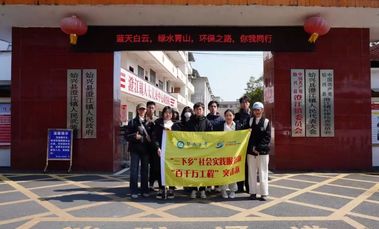
Text/Jiang Wenrui,Chen Buqing
Photos/Tang Yujing,Huang Anni,Chen Buqing
Editing/Chen Buqing,Jiang Wenrui
First review/Feng Xiaolong
Second review/Song Jingsong
Final review/Yan Xin


